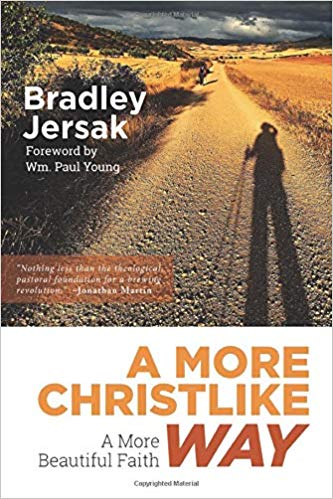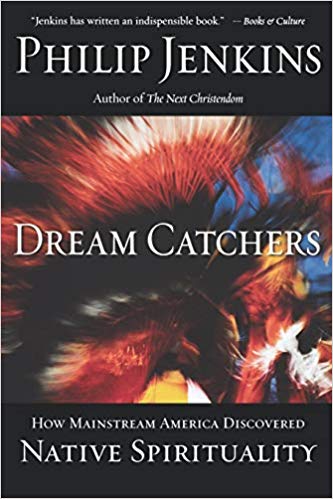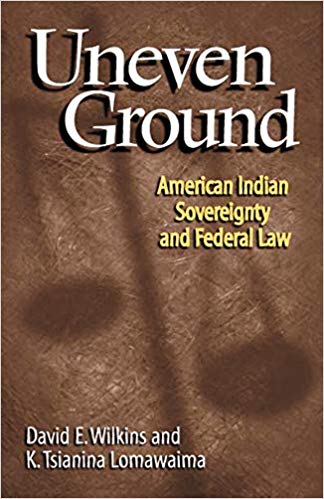Bradley Jersak’s A More Christlike Way: A More Beautiful Faith is another great book looking at how to follow Jesus through the chaos of our current time. Check out the below video for more details about this great book.
What did America look like before Columbus?
What did America look like before Columbus? Was the land wild and untamed or were the indigenous people farmers and city builders?
These are the question Charles Mann seeks to answer in his book 1491: New Revelations of the Americas Before Columbus. For century the common myth is that South and North America was a wild land with very few people. Archaeology discoveries, however, disprove this theory and show that 1/5 of the people alive in the 16th century lived in the Americas (i.e. there was close to 100 million people in the Americas with the world population being about 500 million).
Sadly, disease and sickness (e.g. smallpox) brought over by Europeans killed large numbers of the indigenous people. In some places, 90% to 95% of the indigenous people died within a hundred years of Columbus’ first trip. This massive depopulation led to a restructuring of tribal cities, governments, farms, etc. It also allowed the Europeans to enter and settle the land without much resistance (though there was some, of course).
This isn’t a slam against the Europeans. Disease, viruses, and the like don’t care who you are; they are just bugs that seek to kill and harm.
The importance of this book is that it seeks to tell a better story of the indigenous people of the Americas. History as taught in the USA tends to be very much Eurocentric with very little space or time given to the indigenous people of the land. While I understand the desire to tell the history of Europe, I also think it is important to tell the story of the indigenous people. I am a byproduct of both worlds with European and indigenous blood flowing through my veins. As such, I want to know the history of both of my people. Which is why I picked up Mann’s book. =D
No matter who you are, I think you will enjoy this book.
Blessings.
“The Inner Life of a Counselor” by Robert J. Wicks
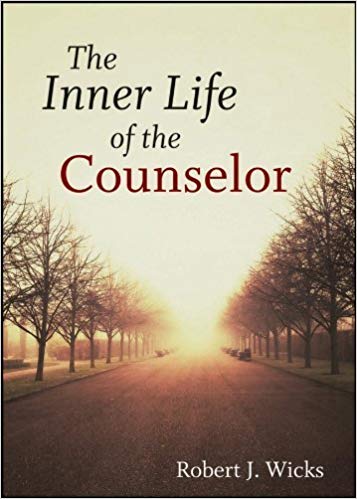
Over the past few decades Dr. Robert Wicks noticed an uptick in the promotion of mindfulness and positive psychology among counselors.[1] While helpful, these concepts seemed to ignore the “wisdom literature of world spiritualities”[2] that addressed the same concerns long before the rise of modern psychological movements. Accordingly, Wicks decided to write the book The Inner Life of a Counselor to “provide encouragement to professional helpers”[3] to let go of the nonessentials while embracing a greater focus on mindfulness and engaging in practices that enhance a healthy perspective of life no matter what is happening around them.[4]
Though I found myself enjoying and agreeing with the all practices promoted by Wicks, it was the concept of humility that found fertile ground in my soul. Wicks defines humility as “the ability to fully appreciate our innate gifts and our current ‘growing edges’ in ways that enable us to learn, act, and flow with our lives as never before.”[5] As someone with a high ‘learner’ and ‘input’ theme on the CliftonStrengths assessment,[6] I have a desire to seek information which can lead to a paralysis of action due to my appetite for knowledge. Paradoxically, these same strengths can cause me to assume I know something when I really don’t. By adopting a “sense of equanimity”[7] through humility, the hope is that I can learn to appreciate the growing edge of my desire to learn while also embracing the reality that I don’t have to know everything.
The words of Zen Master Shunryu Suzuki as retold by Wick were of special importance to me. In the retelling, Shunryu Suzuki told his disciples that they were “all perfect as [they] are” though they “could all use a little improvement.”[8] This struck me as echoing Jesus of Nazareth who loved people where they were while also calling them forward into a new way of life (e.g. John 8:1-11, Luke 19:1-10). To do this, though, we must be willing to unlearn what we know. As Wicks states in his book, “wisdom comes about when we take knowledge and add humility, but humility is not possible without a willingness to unlearn so something new can be entertained – even about concepts, themes, and philosophies of living that we have known well in the past.”[9] It is giving up a ‘perfect’ life in exchange for another that is also ‘perfect’ that may, in the future, be exchanged for yet another as the Spirit of the Breath of Life transforms us into the image of Jesus “with ever-increasing glory” (2 Corinthians 3:18, NIV).
In his novel The Pickwick Papers, Charles Dickens notes that a horse hitched to a cab is quite often not pulling the cab but running from it. In reflecting on this passage, Metropolitan Anthony Bloom commented that often “we are the horse that runs away from the cab in fear of its life.”[10] If we don’t regularly stop and humbly review our inner thoughts and beliefs, they can capture “our hearts and drive us on”[11] to places that we ought not go. Hence Wicks’ suggestion to create space in our lives to sit in silence and solitude so that the “irrational but as-yet-undisputed thoughts about ourselves and the world”[12] will surface. Once they have surfaced, we can then face and process through them as we grow in humility and self-awareness.
Commonly when in a ministry situation, whether in a
formal counseling session or not, I find myself feeling very inadequate for the
task at hand. No matter what education I have or how much information I have accumulated,
I find myself at a loss in what I am supposed to do. In thinking about the
concept of humility, I feel that it might give me the freedom to be with the
person in need without having to have all the answers. It is an acceptance and recognition
of my “growing edges, defenses, overinvolvement in [my] own ego, and
characterological styles.”[13]
At the same time, humbly accepting myself as I am means that I can continue on
my journey of personal improvement and information gathering so that I might
have a response, that, while maybe not ‘correct’ per se, would be of benefit to
the person of concern. It is a both/and concept of being comfortable with the
tension of knowing and not-knowing.
[1] Robert J. Wicks, The Inner Life of the Counselor (Hoboken, New Jersey: John Wiley & Sons, Inc., 2012), x.
[2] Robert J. Wicks, The Inner Life of the Counselor, x.
[3] Robert J. Wicks, The Inner Life of the Counselor, x.
[4] Robert J. Wicks, The Inner Life of the Counselor, x-xi.
[5] Robert J. Wicks, The Inner Life of the Counselor, 8.
[6] CliftonStrenghts, “Understand how your talents work with others”, Accessed on March 23, 2019. https://www.gallupstrengthscenter.com/home/en-us/cliftonstrengths-themes-domains.
[7] Robert J. Wicks, The Inner Life of the Counselor, 14.
[8] Robert J. Wicks, The Inner Life of the Counselor, 15.
[9] Robert J. Wicks, The Inner Life of the Counselor, 101.
[10] Robert J. Wicks, The Inner Life of the Counselor, 50.
[11] Robert J. Wicks, The Inner Life of the Counselor, 51.
[12] Robert J. Wicks, The Inner Life of the Counselor, 12.
[13] Robert J. Wicks, The Inner Life of the Counselor, 106.
“The Roots of Christian Mysticism” by Olivier Clement
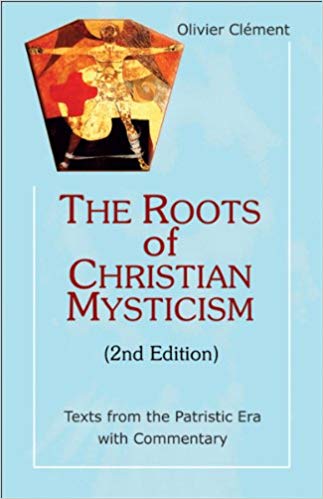
Christianity has changed a lot since its early days with “distortions and caricatures…constantly being hawked about.”[1] Clement’s book is an effort to remind people of the mystic roots of Christianity.[2] To that end, the book includes large portions of text written by the early Church Father with Clement’s own words being used to connect the passages along with some brief commentary on the material.[3] Topics addressed within the book include, but are not limited to the mystery of God, the church, the Eucharist, passions transfigured, prayer, contemplation, and love. The primary theme throughout the book is that our lives, hopes, dreams, and prayers should be centered around Jesus of Nazareth. It is a “spirituality of resurrection”[4] that starts today and goes beyond death.
[1] Olivier Clement, The Roots of Christian Mysticism: Texts from the Patristic Era with Commentary (Hyde Park, New York: New City Press of the Focolare, 2017), 9.
[2] Olivier Clement, The Roots of Christian Mysticism, 9.
[3] Olivier Clement, The Roots of Christian Mysticism, 11.
[4] Olivier Clement, The Roots of Christian Mysticism, 307.
Book Review: Dream Catchers: How Mainstream America Discovered Native Spirituality
Some thoughts and reflections on Philip Jenkins’s book Dream Catchers: How Mainstream America Discovered Native Spirituality
“On the Incarnation” by Saint Athanasius

Saint Athanasius’ primary focus is to explain
why the Creator God had to take on bodily flesh for the salvation of humanity.[1] To that
end, he first addresses the dilemma of life/death and knowledge/ignorance
before looking at the death of Jesus and his resurrection. The final two
sections of the book deals with the Jewish and Gentile objections to the
incarnation and resurrection. Athanasius ends the book with a request for the
reader to not only study the scriptures, but to live a “life modeled on the
saints”[2] so that they
can fully understand the words of the scripture. This ending effectively drives
home the point that the incarnation cannot be fully understood by those who are
not actively following Jesus and allowing the Spirit to cleanse their soul.
[1] Athanasius, On the Incarnation, trans. John Behr (Yonkers, New Jersey: St. Vladimir’s Seminary Press, 2011), 49-50.
[2] Athanasius, On the Incarnation, 110..
Uneven Ground: American Indian Sovereignty and Federal Law
Some thoughts and reflections on David Wilkins and Tsianina Lomawaima’s book Uneven Ground: American Indian Sovereignty and Federal Law
“Pastoral Care” by St. Gregory the Great

In 590 C.E. St. Gregory the Great was elected as the bishop of Rome after the death of Pope Pelagius II.[1] Though he initially tried to avoid the position, he eventually agreed to serve the church and the people of Rome in that role. A year later, Gregory released his book Pastoral Care as “an apology for [his] wish to escape the burdensome office of a bishop.”[2] Within its pages, Gregory outlines the difficulties and challenges one must face in the office of a pastor along with some character guidelines for new recruits. As it happens, the book would become the “standard handbook of pastoral care” [3] for the next thousand years with priests and pastors around the world diving deep into its pages.
The text itself is divided into four parts with each part building upon its predecessor.[4] The first part is focused on difficulties of pastoral ministry and the character traits required of the office. The second part “sets forth the inner and outer life of the good pastor.”[5] The next selection is the longest part of the book were Gregory outlines how to deal with “nearly forty different classes of people.”[6] The final part is a brief chapter reminding pastors to take care of themselves and refrain from pride as they are but humans serving others through the grace of God.
I first read St. Gregory the Great’s Pastoral Care about a decade ago when I timidly stepped into the role of an associate pastor at a small rural church. Though I enjoyed parts of the book, I found Gregory’s advice to be heavy handed rather than servant focused. This time around, however, I had an entirely different impression of the book, finding it beneficial and worth study. Part of this shift in thinking comes from reading Thomas Oden’s Care of Souls in the Classic Tradition in which he outlines the grace and love within Gregory’s tome.[7] The second part of my shift comes from personally experiencing the difficulties and challenges of pastoring. Having had to walk through some tough pastoral situations over the years, I have come to appreciate Gregory’s advice and encouragement. There is a reason this book has become a staple of pastoral care for the past fourteen hundred years.
[1] Gregory the Great, Pastoral Care, trans. Henry Davis, S.J. (New York City: Newman Press, 1978), 3.
[2] Gregory the Great, Pastoral Care, 4.
[3] Thomas C. Oden, Care of Souls in the Classic Tradition (Minneapolis, Minnesota: Fortress Press, 1984),https://www.religion-online.org/book-chapter/chapter-2-why-gregory/
[4] Gregory the Great, Pastoral Care, 20.
[5] Gregory the Great, Pastoral Care, 4.
[6] Gregory the Great, Pastoral Care, 8.
[7] Thomas C. Oden, Care of Souls in the Classic Tradition,https://www.religion-online.org/book-chapter/chapter-2-why-gregory/
“Care of Souls in the Classic Tradition” by Thomas C. Oden
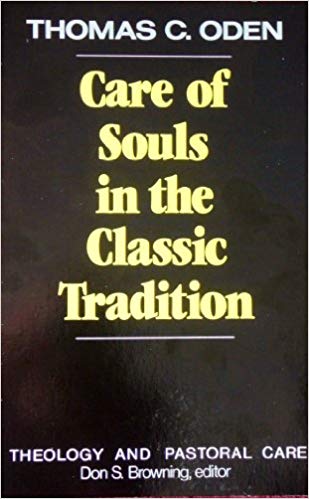
After years of teaching pastors and Christian leaders about the merits of modern psychotherapy, Thomas Oden became “painfully aware of the so-called outcome studies reporting the dubious effectiveness of average psychotherapy.”[1] This awareness lead Oden on a circuitous journey that ultimately concluded with him turning towards the psychological insights held within the pastoral tradition “expressed by the ecumenical consensus of Christianity’s first millennium of experience in caring for souls.”[2] The book under question is the result of this journey with Oden actively promoting the pastoral soul care teachings of the early church.
The first chapter of the book is devoted to unpacking Oden’s personal research showing the shift in the early 1900’s away from classic tradition of soul care to the teachings of modern psychologists and psychotherapists.[3] The result of this shift is that, in Oden’s option, there is no longer any “distinction between Christian pastoral care and popular psychological faddism.”[4] The problem with this shift is not just a theological issue, but a practical one as the modern psychotherapy cure rate is about the same as what would happen if nothing was done.[5] The answer to this crisis isn’t to forgo modern research, but to develop an approach to pastoral care that blends both the modern and ancient insights into the human soul.[6]
After this stage-setting chapter, Oden shifts gears to exploring the life and message of the most influential writer on pastoral care in the history of Christianity.[7] The person in question is none other than St. Gregory the Great (540-? C.E.), whose Pastoral Care became the “standard handbook of pastoral care” [8] for over a millennium. To that end, chapter two of Oden’s book is devoted to St. Gregory’s background, pastoral work, theology, and other influences. Chapters three and four dive deeper into the content of St. Gregory’s book with Oden highlighting the overlap between modern clinical psychotherapy and the soul care promoted by St. Gregory.
On
a personal level I thoroughly enjoyed Thomas Oden’s book and his promotion of
the classical tradition of pastoral soul care. While I firmly believe that
psychotherapy can be helpful, I also firmly believe that the role of a pastor
is vastly different from that of a professional psychologist. In this I have
been influenced by Eugene Peterson who reminded pastors that their job was to
call people to worship God and not to be counselors.[9]
Accordingly, I found Oden’s comments about recovering the classic role of a
pastor very lifegiving and freeing. In this, Oden has fulfilled his goal of
helping ministers like myself find freedom from modernity while grasping the
“emerging vision of a postmodern classical Christianity.” [10]
[1] Thomas C. Oden, Care of Souls in the Classic Tradition (Minneapolis, Minnesota: Fortress Press, 1984), https://www.religion-online.org/book-chapter/introduction-30/.
[2] Thomas C. Oden, Care of Souls in the Classic Tradition, https://www.religion-online.org/book-chapter/introduction-30/.
[3] Thomas C. Oden, Care of Souls in the Classic Tradition, https://www.religion-online.org/book-chapter/chapter-1-recovering-lost-identity/.
[4] Thomas C. Oden, Care of Souls in the Classic Tradition, https://www.religion-online.org/book-chapter/chapter-1-recovering-lost-identity/.
[5] Thomas C. Oden, Care of Souls in the Classic Tradition, https://www.religion-online.org/book-chapter/chapter-1-recovering-lost-identity/.
[6] Thomas C. Oden, Care of Souls in the Classic Tradition, https://www.religion-online.org/book-chapter/chapter-1-recovering-lost-identity/.
[7] Thomas C. Oden, Care of Souls in the Classic Tradition, https://www.religion-online.org/book-chapter/chapter-2-why-gregory/
[8] Thomas C. Oden, Care of Souls in the Classic Tradition, https://www.religion-online.org/book-chapter/chapter-2-why-gregory/
[9] Eugene H. Peterson, The Pastor: A Memoir (New York City: HarperOne, 2011), 136-142.
[10] Thomas C. Oden, Care of Souls in the Classic Tradition, https://www.religion-online.org/book-chapter/introduction-30/.
History, Myths, and Sacred Formulas of the Cherokees
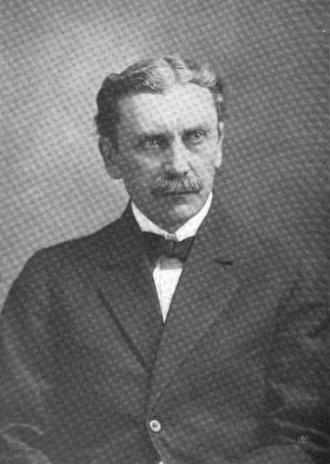
In reading various books on the history of the Cherokee people I kept hearing one name mentioned repeatedly: James Mooney. So, I bought his book. =)
Mooney was a first-generation Irish American who grew up on the stories of the old country. As a teenage in the mid-1800’s he started to memorize the names of all the Native American tribes in the North America. This led to a job with the newly formed Bureau of American Ethnology. From that point one Mooney would dedicate his life to recording the stories of the Cherokees and other Native American tribes across the country.
His first book, The Sacred Formulas of the Cherokee, was published in 1891. Nine years later in 1900 his masterpiece Myths of the Cherokee was released. The first half of this book is devoted to telling the history of the Cherokees from their first contact with European explorers in the 1500’s to the end of the nineteenth century.
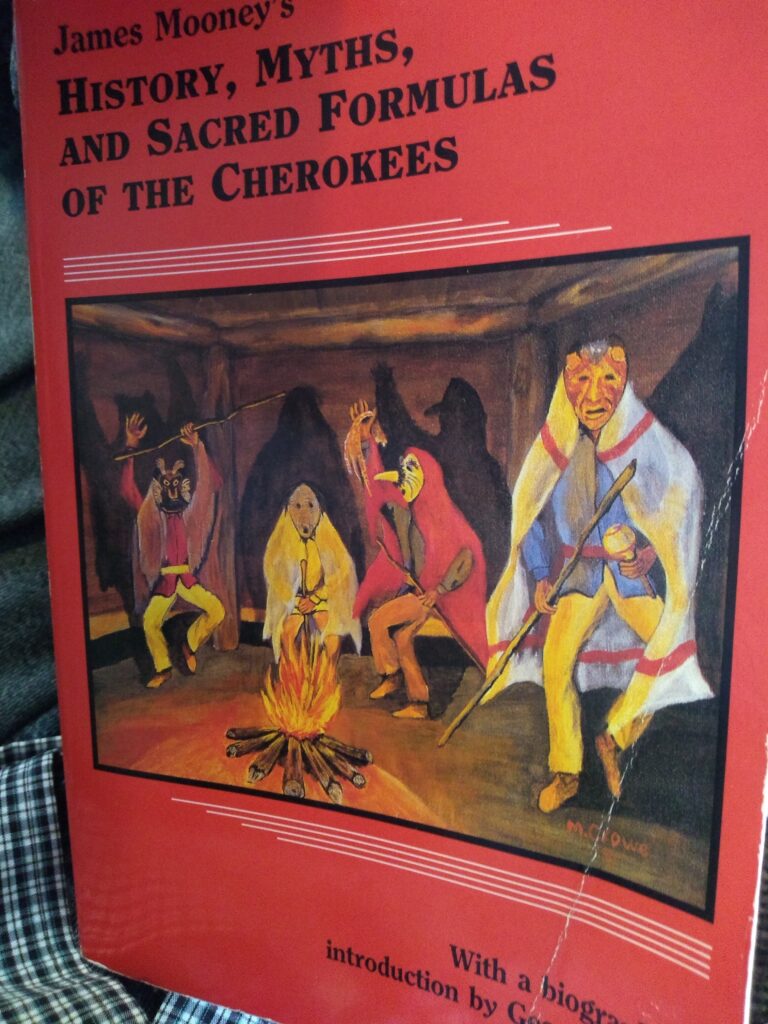
In order to gain the information necessary for these books, Mooney spent years living among the Cherokees. Most of the time he was in North Carolina and Georgia among the Eastern Band of Cherokees, which were those people who remained in the ancestral land after the Trail of Tears (1838-1839). However, he did make a few visits to Cherokee Nation in Oklahoma (then Indian Territory) to collaborate the stories he was hearing in the east.
On a personal level, it was awesome to hear the stories my ancestors would have told each other. Stories about creation, the animals, and the land. In researching my family, I discovered that my great-great-great grandfather Zachariah T. Langley would have been in and around the area Mooney was in the 1880s. Both he and his son, John W.D. Langley, was listed on the Eastern Band’s rolls during this time before moving to Oklahoma in 1890. Most of Zachary’s family, including his mother, would stay in the east among the Eastern Band.
The tribe was introduced to Christian in the early 1800’s. Recognizing the shifting cultural tide, the tribal leaders invited the Moravian Church to start a school within the nation. This opened the door to other groups, most of which were helpful to the Cherokee Nation as a whole. As in, several Christian pastors fought for the tribe against the US Government during the 1830s when the government was forcing them to move west. Though it would be remiss of me if I didn’t note that there were other Christian leaders who were not so kind to the Cherokees. History, like today, is a mixed bag of good and evil.
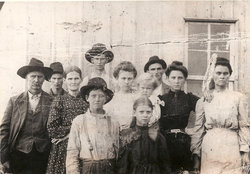
As a side note, I think it is really cool that the Moravian were the first group to engage the Cherokee people. My own personal faith journey was impacted by the history and writings of the Moravian as longtime readers of this site will no doubt know. Though I have yet to personal meet anyone who journeys within that stream of the faith, they have left an impact upon my soul.
In the interest of time I will end this review. It is enough to say that I am incredible thankful for James Mooney’s foresight to record the stories of my people. I am also grateful to the elders of the tribe who told the stories to him. It is a blessing to be able to read these stories over a hundred years later.
Grace and peace.

